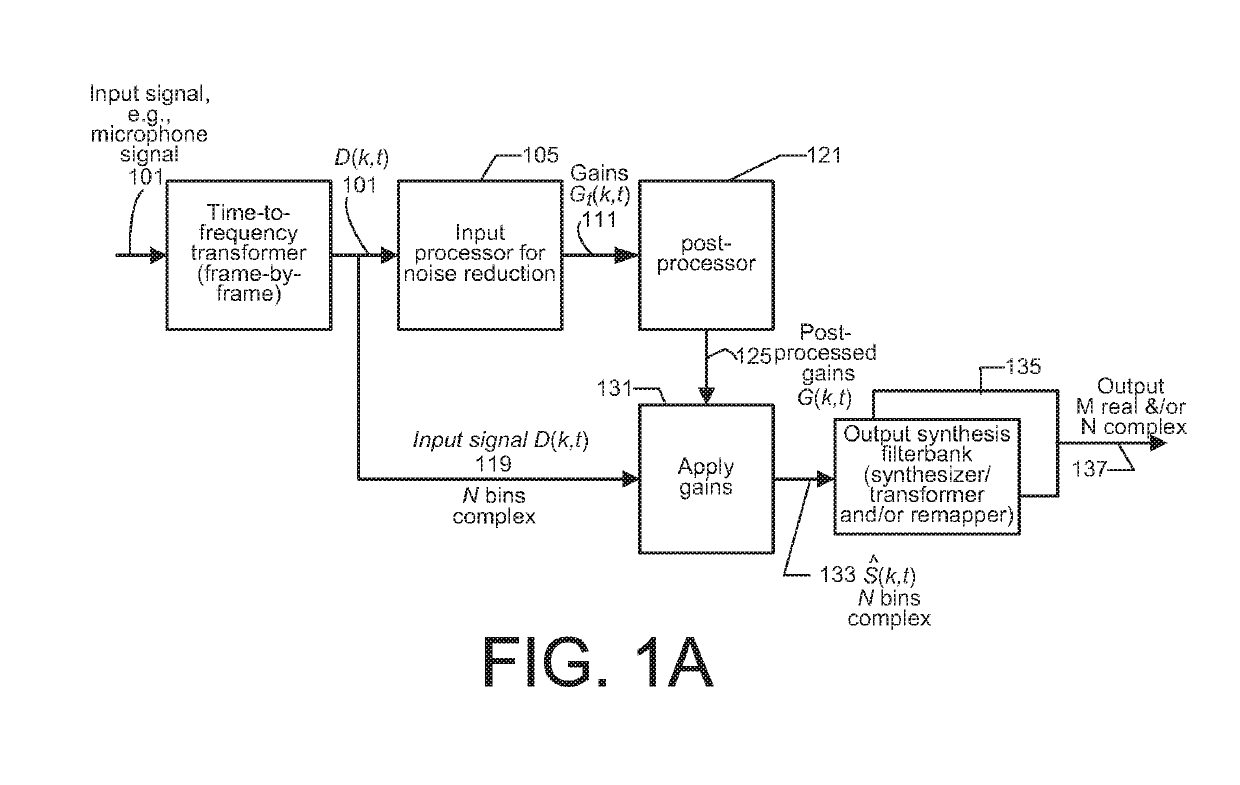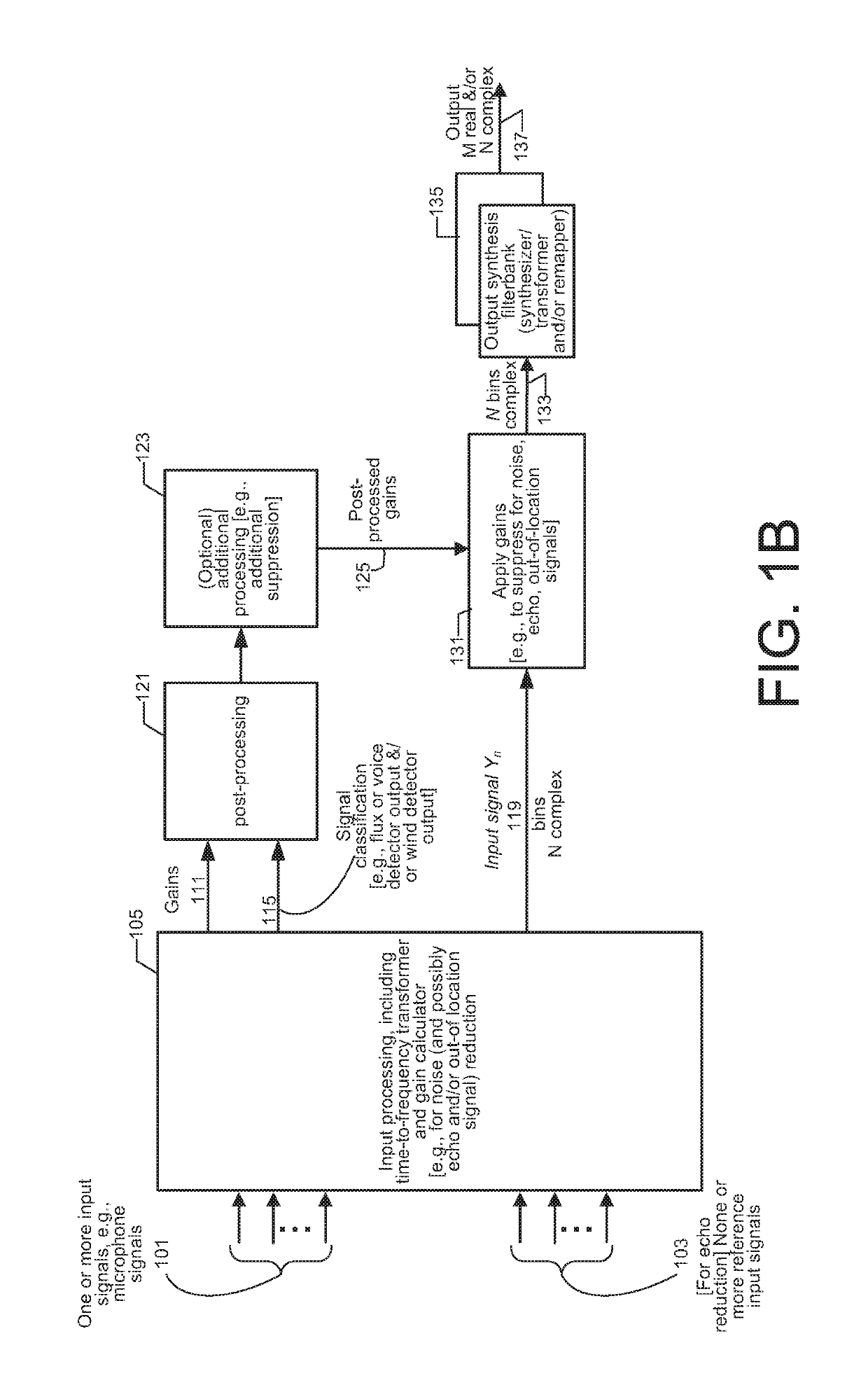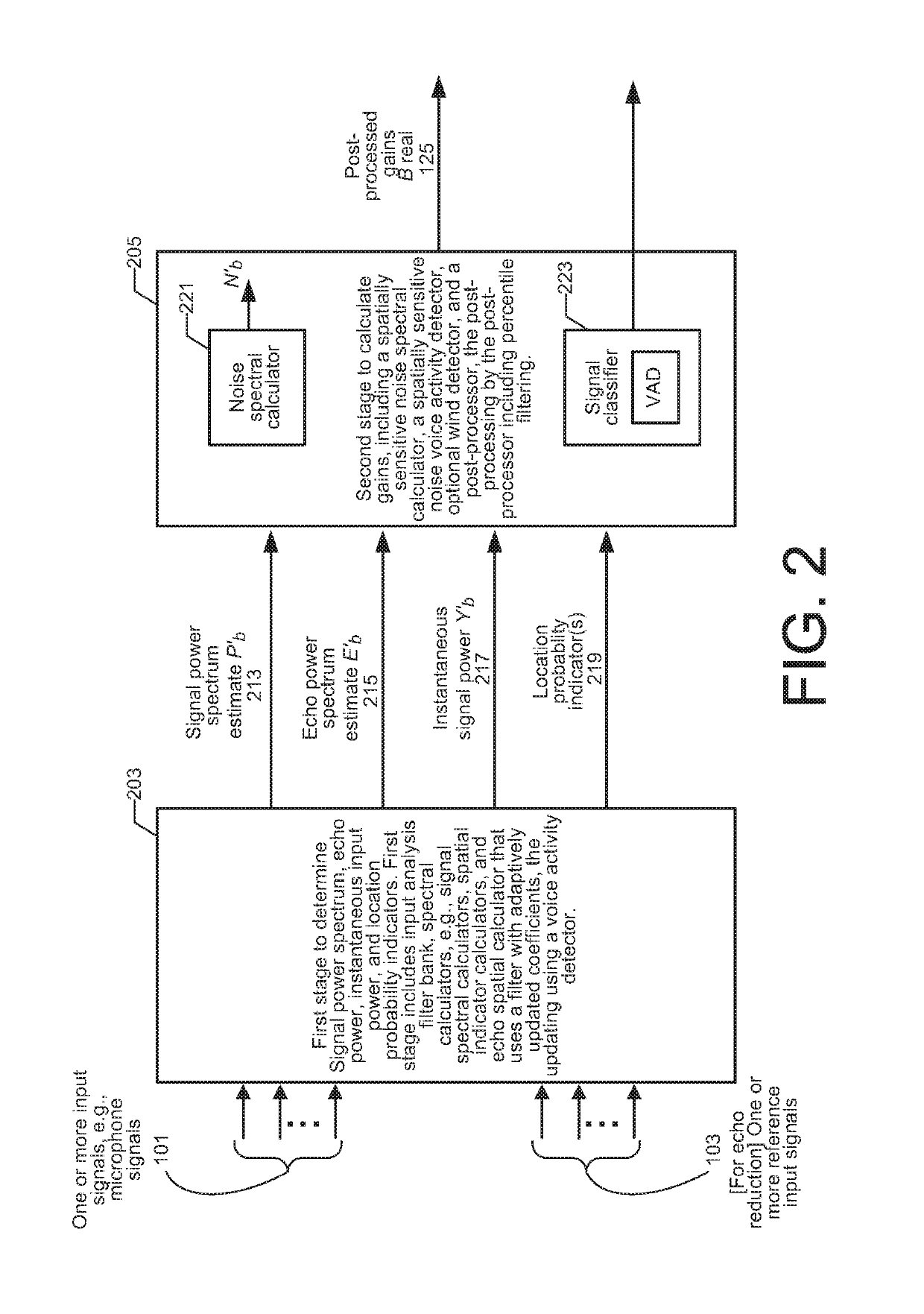Post-processing gains for signal enhancement
a post-processing and signal enhancement technology, applied in the field of audio signal processing, can solve the problems of speech distortion and musical noise, spurious peaks in the spectral representation of the signal, and various artifacts
- Summary
- Abstract
- Description
- Claims
- Application Information
AI Technical Summary
Benefits of technology
Problems solved by technology
Method used
Image
Examples
embodiment 1000
[0068]FIG. 10 shows a simplified flowchart of one method embodiment 1000 of the present invention. The method is of operating a processing apparatus and includes in 1003 accepting in the processing apparatus one or more audio inputs, and in 1005 carrying out input processing to determine a raw gain, e.g., a raw gain denoted raw gain Gt(k,t) as a function of frequency bin k and time frame index t for a set of frequency bins. Embodiments of the present invention include in 1007 determining for each frequency bin of a set of frequency bins a post-processed gain using one or both of delta gain smoothing and decision-directed gain smoothing, where delta gain smoothing includes applying a smoothing filter to the raw gain Gt(k,t) with a smoothing factor that depends on the absolute value of the difference between the raw gain for the current frame and the post-processed gain for a previous frame, and wherein decision-directed gain smoothing includes converting the raw gain to a signal-to-n...
embodiment 900
[0144]FIG. 9 shows a simplified block diagram of one processing apparatus embodiment 900 for processing one or more of audio inputs 101, e.g., from microphones (not shown). The processing apparatus 900 is to determine a set of gains, to post-process the gains according to an embodiment of the present invention, and to generate audio output 137 that has been modified by application of the post-processed gains. One version achieves one or more of perceptual domain-based leveling, perceptual domain-based dynamic range control, and perceptual domain-based dynamic equalization that takes into account the variation in the perception of audio depending on the reproduction level of the audio signal. Another version achieves noise reduction.
[0145]One embodiment carries out noise reduction on a single microphone input audio signal. Such a version includes only the input and output.
[0146]Another embodiment also includes echo reduction, and in such a version, the processing apparatus also accep...
PUM
 Login to View More
Login to View More Abstract
Description
Claims
Application Information
 Login to View More
Login to View More - R&D
- Intellectual Property
- Life Sciences
- Materials
- Tech Scout
- Unparalleled Data Quality
- Higher Quality Content
- 60% Fewer Hallucinations
Browse by: Latest US Patents, China's latest patents, Technical Efficacy Thesaurus, Application Domain, Technology Topic, Popular Technical Reports.
© 2025 PatSnap. All rights reserved.Legal|Privacy policy|Modern Slavery Act Transparency Statement|Sitemap|About US| Contact US: help@patsnap.com



